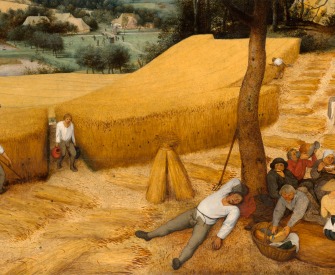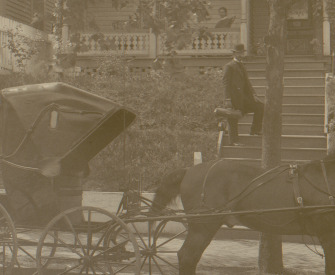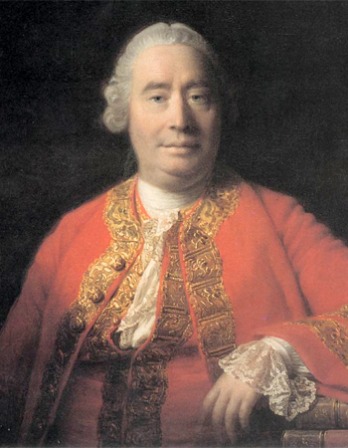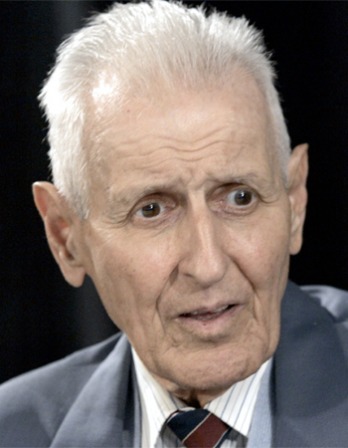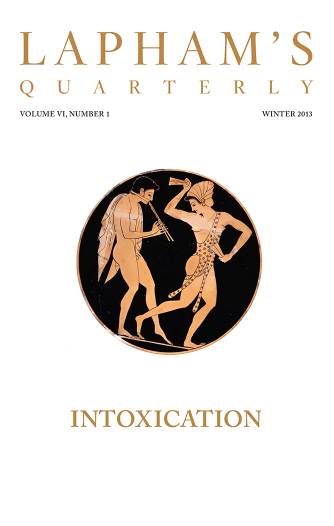The doctor should be opaque to his patients and, like a mirror, should show them nothing but what is shown to him.
—Sigmund Freud, 1912Great Expectations
Medicine was once a humanistic endeavor, an art as well as a science. Today both doctors and patients fail to see that we are more than just our bodies.
By Noga Arikha

The Doctor, by Friedrich Friedländer, 1870.
We expect too much from medicine. We all wish that some body of knowledge would contain all answers to all our questions, provide a cure for all our ailments, an end to all our anxieties. Unhappily, medicine is inexact and incomplete. But this is easy to forget, just as it is easy to forget that the doctor is no neutral service provider: we are not cars or computers requiring standard servicing. Nor is health insurance a warranty over our body: it buys the right to have repairs, so to speak—whose effectiveness is unpredictable at best—but not to exchange damaged goods. New limbs can be ordered, new heart pumps, new kidneys, and even new cells. But these are only parts of a whole that is the self, which is a reality not always present to our conscious minds: we tend not to contemplate our bodily self from within but rather to expect knowledge of it to come from without. We objectify the body in order to make sense of it. So does the doctor.
Medical practice has thus become increasingly specialized. There is more and more to know about smaller and smaller dimensions of the body, as if our constitution as a human being were irrelevant to the understanding of what may just as well be a complex, selfless machine. Focused on measurable, microscopic realities, addressing specific targets at cellular and now genetic levels, our medical technologies allow for the invention of treatments more efficient and less invasive than ever, helping to ensure a longer lifespan throughout the populations of the developed world. But where is the concern for the embodied self? How do we, the individual patients, relate to the divisions of our anatomy into bits and pieces, to the charts and numbers on our medical records? Why should we believe that the knowledge of our digitized self has anything to do with our ailments and anxieties? And whatever happened to the warm, wise embrace of the compassionate physician?
Medicine was not always about cold data. The memory of the old-fashioned family doctor, allayer of discomfort and fear, is not entirely a fantasy. There was once world enough and time for such a figure. Some might still remember house calls, the devotion of one doctor to one family, and of a family to its doctor. But such availability is largely unimaginable today, especially in America. The economics of medical care don’t permit it. Technology and efficiency have won out over the old idea that medicine is primarily concerned with the treatment of patients. Technological progress allows for innovation and better treatment—from antibiotics to bypass surgery—but good medicine continues to require, preferably in equal measure, psychological awareness, intuition, sensitivity, and empathy. Even the most hard-nosed, scientifically informed patient expects some of those qualities in a doctor whose profession it is to make us feel better and presumably live longer.
Medicine was once a humanistic endeavor, an ars, an art or practical skill, as well as a scientia, or body of knowledge. Early Western doctors, who lived in Greece near the end of the fifth century BC and followed in the footsteps of Hippocrates, remembered as the founder of medicine, believed it was of paramount importance to establish a diagnosis and a prognosis before prescribing a therapy. All three parts were equally important in establishing the patient’s individual historia, and each one depended on the other. This was an empirical endeavor based on a new rationalism that informed also the first stirrings of philosophical wonder. Instead of appealing to gods to understand nature or to cure bodies and souls, rationalist doctors, like the first philosophers, used reason and observation in order to understand nature on its own terms, identifying natural causes and recommending treatments on the basis of what they saw.
Performing the work heretofore done by priests, the doctors of Greek antiquity knew that success was never guaranteed. Unlike priests, who were the orators of truth and certainty when it came to healing, doctors undertook to relieve pain and if possible prolong life, not to perform miracles: there were avowed limits to what they could do. As an art and a profession, medicine developed within those limits. At first, medical care was associated with the “folk” knowledge of medically effective herbal remedies, acquired by empirical means and passed on from one generation to the next—often within individual households or towns. One might therefore date the birth of the medical profession proper to the time when such empirical knowledge began to expand beyond local or domestic confines and when doctors began to provide services to strangers for a fee, going from town to town. Remedies multiplied as knowledge traveled along with populations—within Greece, from Egypt and Persia to Greece, and from there to the Greek colonies in southern Italy.
The establishment of medicine as a profession entailed its codification as a practice. The Hippocratic Oath was this code. Collected along with the Hippocratic corpus of writings on medicine, the Oath focused on the ethics of medical care—on the physician’s responsibilities and duties—in the light of the inordinate power he (usually he) had over the patient’s life and well-being. With the ability to heal came also the ability to harm, and by taking the Oath, the physician swore—by the god Apollo, his son the god of medicine Asclepius, and granddaughters Hygieia and Panacea—to use his tools and knowledge exclusively “for the benefit of the sick.” The Declaration of Geneva, a modern document inspired by the Oath, is still sworn to by doctors today, “in the service of humanity,” no longer in the name of the gods.
Doctors who relied on reason rather than revelation did not displace the services supplied by priests. People within the Greco-Roman world continued to rely on the ever popular Asclepius for their cures. They would visit the god’s spalike sanctuaries, take the waters, partake in the rituals, and then spend the night there, hoping to dream that the god was visiting them in the guise of the serpent that one sees on statues of Asclepius coiled around his staff. Hippocrates himself was believed to be an Asclepiad, presumably descended from Asclepius. The Hippocratic Oath might have defined the scope and bounds of a new profession; there are precise texts, data, social and historical realities regarding the methodology and practices of the “first” doctors. But in the popular imagination, the story of how medicine began remains shrouded in myth, merged with divine intervention and legendary heroes.
From its beginnings, whether in history or myth, medical knowledge always has been the preserve of a few. It is in virtue of the patient’s ignorance that the doctor’s expertise is precious and his powers sacred. But it is also at once reassuring and worrisome that someone should be able to have more knowledge than oneself about one’s body. Such knowledge can induce submission. Even while medical schools were being founded in twelfth- and thirteenth-century Europe, priests and monks continued to some extent to perform as doctors, the body viewed as the mere container of the soul, whose custodians they already professed to be. At refined medieval courts like Baghdad or Cordoba, doctors were still philosophers. Their knowledge of medical theory could be impressive and extensive, but what was actually practiced at the bedside would not have felt either theoretical or philosophical to the patients.
For although medicine was always explicitly supposed not to harm, the recommended treatments were often violent. Doctors administered clysters and emetics, served brutal laxatives in the form of pills, lozenges, or powders that could contain everything from turpentine, gum arabic, sulphur, and ammonia, to aloes, licorice, mastic, ragwort, garlic, fennel seeds, or donkey milk. Patients were made to ingest poisonous metals like mercury or noxious plants like hellebore, which induced dangerous purges. Most notorious of all, there was bloodletting, or phlebotomy, achieved through a variety of techniques like lancing, cupping, or the use of hungrily efficient leeches—and believed to be necessary in a large number of cases even when it increased the patient’s weakness or indeed hastened death. The health guide Regimen sanitatis Salernitanum—in print throughout Europe from the Middle Ages until the nineteenth century—advised its regular practice as a form of prevention and hygiene.
Such treatments would have been unacceptable without justification, which, for nearly 2,500 years, was to be found in the perfectly ordered, though far from simple system of the humors. According to the most common version of this system, established by the Hippocratics, refined by Galen and enriched by physicians, philosophers, and natural philosophers over the centuries, the human being was constituted of four humors—blood, phlegm, yellow bile, or choler, and black bile, or melancholy—that each in turn corresponded to an element—air, water, fire, earth—and its respective qualities of hot and cold, dry and moist. Health meant a balance between these components, and ill health an imbalance. If one had a cold, or indeed any disease interpreted as phlegmatic, the solution was usually to apply a warming and drying remedy that would counteract the excessive moisture. The constitution, or temperament, of each patient would of course determine what exactly should be prescribed; the Salerno Regimen did not recommend phlebotomies after sex or baths, nor if one lived in a cold place. But the methodology was given, and medicine consisted in its application. Purges and phlebotomies were supposed to relieve the patient of corrupt humors, fetid vapors, fevers, and putrid blockages. People were plumbing systems, and putridity was never far away from either the imagination or the senses. The humoral system seemed to work enough of the time that it survived despite the violence of its most extreme applications—or perhaps because of it, since a remedy’s potency was measurable by its visible effects.
And so medicine remained a respectable profession, an authoritative body of knowledge, and of course a necessary service. It must be said that not all methods were violent and not all remedies drastic, nor were they are all terrifying compounds. Diet and lifestyle mattered, foods were prescribed or proscribed. The “simples”—herbs, plants, spices, and seeds that served as medications or out of which medications were fabricated—constituted an often very effective kind of herbalism, based on the materia medica or herbal manuals passed down from Theophrastus, Dioscorides, and Pliny the Elder, full of valuable data recuperated today by industrial pharmaceuticals.
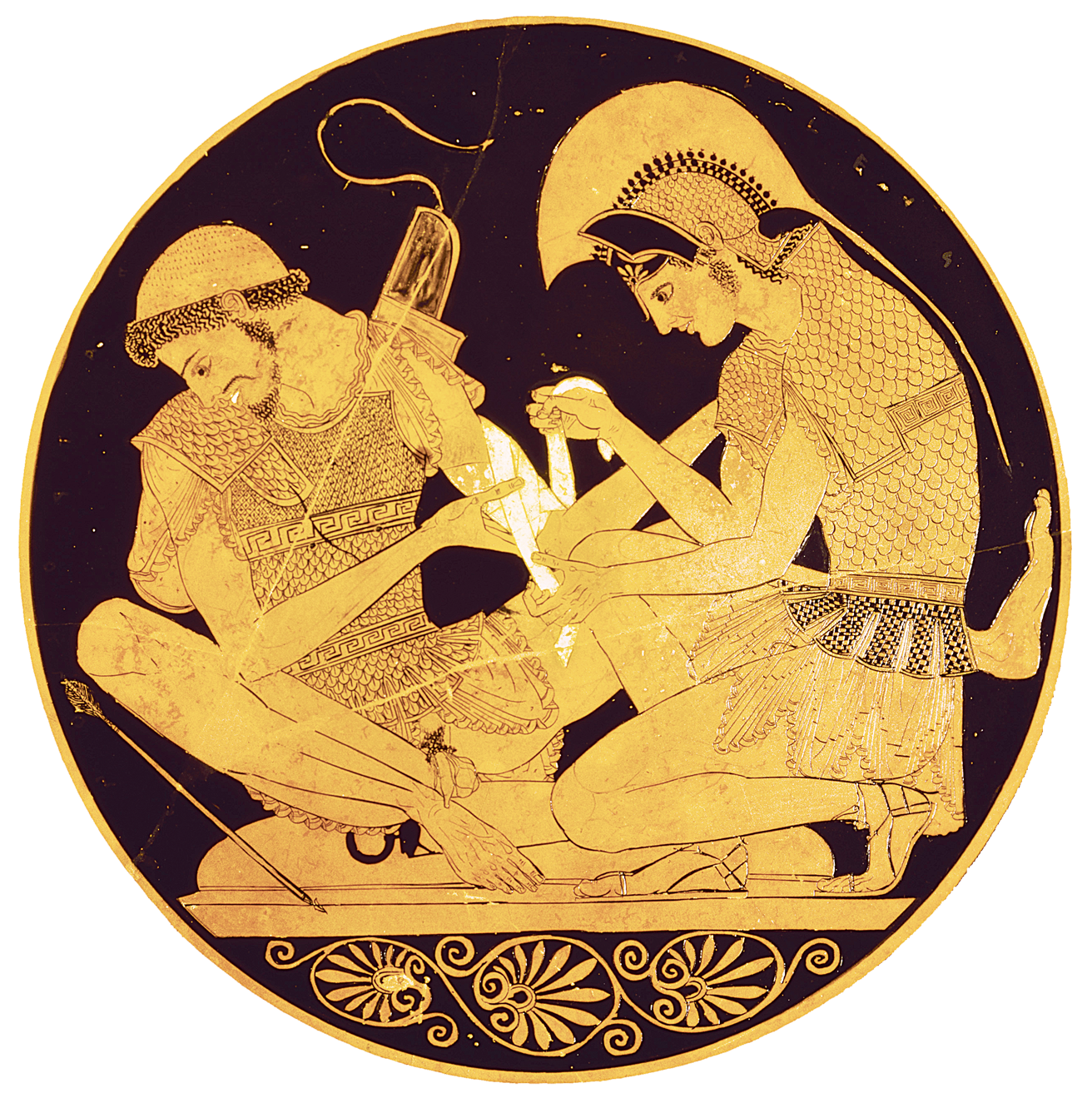
Achilles binding Patroclus’ wounds, from a kylix by the Sosias Painter, c. 500 BC. Altes Museum, Berlin, Germany.
Yet empirics who provided the simples or who knew how to use them were lower down the medical hierarchy than those who knew abstruse tracts by heart; the barber-surgeons who cut a stone or performed phlebotomies might also know how to repair a broken leg, while experienced midwives might have no diploma at all. These were “mere” empirics. The established, trained, expensive doctors were versed in Latinate theory, generalists who would not get their hands dirty, as per the Hippocratic Oath. Rather than chopping the body up into pieces, they stuck to the familiar theory that explained its unity, and accounted for all possible ailments. Empirical evidence was besides the point. At the height of rationalist medicine, doctors could kill their patients out of the conviction that the books were right, however much the bodies protested. Chaucer parodied them, Montaigne stayed away from them, Molière poked fun at them. Patients could choose to rely on these doctors’ abstruse discourses, or instead on secretly prepared medications; they might appeal to broadly unlawful but immensely popular magical practices, or heed a doctor’s wise, though helpless, advice that time was the best healer. The most common ailments do heal by themselves, and the doctor’s role in such cases could only consist in encouraging patience and rest. All else remained, as ever, in the hands of fate, or the gods. Priests were never far from a patient’s bed.
It is noteworthy that despite the accumulation of new data about the body’s anatomy and physiology, especially from the seventeenth and eighteenth centuries on, available treatments remained limited for a long time. Quacks and mountebanks who sold panaceas for everything from insomnia and impotence to gout and phthisis multiplied as the Greco-Roman foundations of the medical establishment began to crack. Mechanistic explanations of the body began to take over from humoral theories. And while priests kept their hold over the soul, doctors took control of the body that contained it—and in the process, the body lost its soul. Hygiene improved in the nineteenth century thanks to the new understanding of sepsis as the basis of infectious disease, which had a major effect on well-being, but only by way of its immediate, practical application.
In fact it is practical care, the ars of medicine, that we look for in a doctor. The diplomas on the wall bespeak training, deontology, proficiency, knowledge base, but we do not believe in our doctors on the basis of their scientia. We expect them to know more than us, but we do not expect to hear from them a scientific account of our disease. While scientific theories evolve, Hippocratic medical practice remains the same—if an antibiotic works, we don’t require an account of how it works. That is the job of the molecular biologists, of the scientists, not the practitioners. Established definitions of disease vary even when the disease does not, and we only use whatever explanation is available and fits the symptoms. Even more so with mental illness, since the nature of mental matter is hard to pin down—so once humors were out, in came nerves; once nerves were out, in came hormones, neurotransmitters, and genes. In all cases we generalize out of what we know, saying about a depressed state, according to the period and culture, that it is adust melancholy, frayed nerves, hormonal imbalance, neuronal chaos, scrambled neurotransmitters, unlucky genes.
But today’s medical studies provide technical training—rarely an exposure to the philosophical apparatus or historical background that one might need to question entrenched assumptions about the nature of the body, and that might enable the medical student to become a humanistic doctor rather than a technician of the body, to learn how to measure without relying excessively on the available measurements of the day, on the latest beliefs and theories. Even where there is the inclination to philosophical contemplation or historically backed skepticism, there is little time for it in a doctor’s busy life. The job of a doctor today is to be as up to date as possible with the research pertaining to his or her field.
And so, we give up on ars. We learn to accept that what we must look for in the specialist is bookish knowledge, expertise, scientia. Which is why the Internet is playing an increasingly important role in our medical lives. The data are plentiful: symptoms, causes, etiologies, treatments, scientific papers, and doctors can all be found online. The doctor might then provide further information, final decision-making based on previous experience, and of course, prescriptions for tests and medications. We still need a doctor’s analysis. For instance, we might be told what the symptoms of swine flu are, understand the relation between a specific pathogen and the ailments it triggers, but we cannot determine on our own whether our ailments are symptomatic of that virus. The doctor must be called—and usually he or she will request a blood test to give a verdict and recommend a treatment. The truth is in the blood, more today perhaps than ever before, even though the idea that the blood harbors the soul is probably as old as human consciousness. And while the question of the soul is debated by neuroscientists rather than discussed by metaphysicians or guarded by priests, the contents of blood, lymph, and bone marrow deliver countless secrets.
Well now, there’s a remedy for everything except death.
—Miguel de Cervantes, 1605But regardless of what the blood tells those who know how to read its contents, and regardless of the extraordinary sophistication of specialist treatment, these practices are primarily a parts service: at best the shiniest product of the mechanistic age, at worst the reduction of a humanistic practice to a scientific study. This service is invaluable for what it provides, but we need our doctors to be knowledgeable also about the historia of each individual patient, able to divine out of disparate symptoms underlying pathological conditions, to delve as deeply into the mindful, ensouled, bloody body as did Freud into the embodied mind. We want, indeed need, doctors who have time, who believe in the Hippocratic Oath rather than worry about finances or lawyers, who understand the patient’s need for priestly authority over body and soul—although the need to believe in an external authority about our own bodies is precisely what undercuts our capacity to introspect, to trust the practitioner on an empirical basis, rather than on the basis of diplomas.
It is unfortunate that the order that prevailed in humoral days, when the specialist was the lowly, badly paid empiric who knew less than the rationalist generalist, has been reversed, and that generalists are less valued than specialists. Diagnoses have become more precise now that we know of so many more causes for ill health and have so many more analytic techniques to treat them; but precision is not always exactitude. Today’s specialist is akin to the old rationalist, defining the area of investigation a priori and paying little attention to the whole, as opposed to the generalist, who paradoxically has become closer to the empiric of whom the humoralists had thought so little.
One might venture to say that the humors were the admittedly opaque bath water discarded along with the holistic baby—the acute awareness that all parts of the body were interconnected, since the humors united them all. Many people are now in fact turning to the holistically minded doctors that overextended and underfunded hospitals rarely can afford. Given the mechanistic turn taken by medicine since the eighteenth century, those doctors are often of non-Western traditions, or, in some cases, have inherited the alternative practices—and sometimes quackish beliefs—that proliferated in the early modern world. The placebo effect—according to which the belief in the efficacy of a cure is more efficacious than that particular cure—has long existed, as has the nocebo effect, according to which one imagines that the “cure” is actually making one sick.
One’s state of being is hard to judge—one’s perception of it is reality as much as its reality is our perception of it. Whether we choose the holistic general practitioner or the technologically advanced specialist, the demands we make on our doctors are the same. We want doctors to tell us what our symptoms are, what our bodies are, what we feel and even who we are. We want and claim bodily and epistemological autonomy; more and more people are better and better equipped to choose treatments and critique doctors. But ultimately we would choose to be helpless before medical authority, and accept the hellebore, or indeed the chemotherapy, if violent treatments might save our lives—or the acupuncture, or special diet, if the soft ones might improve our well-being.
Our relation to medical authority is understandably confused. But the turn to holism as an alternative to mechanism is significant. Mainstream medicine is beginning to take it into account, but until the advent of a new medical humanism, we must make do with the fallible doctors and the precise tests by remembering not to rely on either doctors or tests so much that we end up mistaking doctors for machines and tests for medicine—and all of them for priests.
